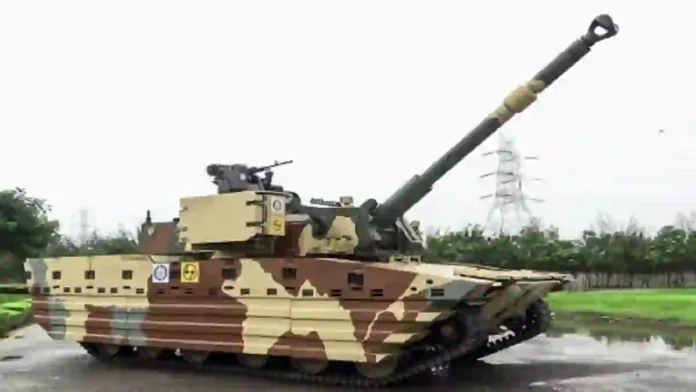The Defence Research and Development Organisation (DRDO) and Larsen & Toubro (L&T) are preparing to conduct a key series of firing trials that will see an indigenous Anti-Tank Guided Missile (ATGM) being tested from the Zorawar light tank. This event represents an important milestone in India’s ongoing efforts to indigenise advanced weapon platforms and integrate indigenous missile systems onto armoured vehicles tailored for the Indian Army’s operational environment.
The upcoming trials, to be conducted in the desert ranges of Rajasthan, will focus not merely on validating the ATGM’s lethality, but more critically on proving the seamless integration of the missile into the Zorawar’s fire-control system.
Read- Pakistan When Karma Comes Calling
This will include the assessment of accuracy, target engagement capability, and overall performance consistency when launched under battlefield-like conditions. Successful execution will bring the Zorawar project closer to full operational readiness, enhancing the tank’s effectiveness as a versatile weapon system optimised for high-altitude operations, including the strategically sensitive terrain of Eastern Ladakh.
The Zorawar light tank itself symbolises India’s response to evolving operational scenarios that demand highly mobile armoured platforms capable of performing in mountainous and riverine terrain.
Developed under the “Make-I” category of the Defence Acquisition Procedure, the programme is a collaboration between DRDO’s Combat Vehicles Research & Development Establishment (CVRDE) and L&T. With a combat weight of about 25 tons, Zorawar is designed for rapid deployment, offering a crucial balance between protection and agility.
Its primary armament is a 105mm Cockerill gun with advanced fire-control and stabilisation systems, giving it the capability to engage a variety of ground targets.
However, the integration of an indigenous ATGM adds a decisive dimension to its battlefield role, equipping it to neutralise heavily armoured enemy platforms at extended ranges, thereby compensating for the lighter calibre of its main gun compared to heavy battle tanks.
Read- India’s Next Indigenous Aircraft Carrier Likely To Be Nuclear Powered
Read- ‘Will Undoubtedly Buy;: Nirmala Sitharaman Says Russian Oil Suits India’s Needs
These ATGM trials form a critical phase in validating weapon integration on the Zorawar platform. The indigenous ATGM represents a significant step forward in India’s pursuit of self-reliant missile technologies, providing long-range precision engagement options without dependence on imports.
Firing tests will measure critical operational parameters such as seeker lock-on times, guidance accuracy, flight stability, armour penetration, and system reliability when fired in varied conditions including desert dust and high-temperature environments.
Integration with the tank’s advanced sighting and fire-control system will also be scrutinised to ensure that the process of target acquisition, missile launch, and post-launch guidance occurs flawlessly from within the confined digital and electronic environment of the Zorawar turret.
The trials will serve as both a proof-of-concept and a prelude to larger validation exercises in mountain terrains, underscoring the tank’s versatility.
Strategically, these indigenous trials carry wide significance for the Indian Army’s modernisation and its growing emphasis on self-reliant combat systems. The deployment of a light tank like Zorawar is intended for frontline use in areas where heavy main battle tanks face mobility challenges, such as the high-altitude plateaus of Ladakh, where India faces a contested operational environment.
A light but potent platform, reinforced with indigenous ATGMs, ensures rapid reinforcement and powerful deterrence while remaining cost-effective and logistically manageable.
Furthermore, the integration of indigenous missile capabilities into frontline armour platforms demonstrates a degree of technological maturity that enhances India’s defence industrial base, reduces import dependence, and bolsters India’s credibility as an arms developer and exporter.
In effect, the firing trials of the ATGM from the Zorawar tank do not merely represent an engineering event but mark the confluence of India’s strategic intent, technological innovation, and battlefield adaptation.
If successful, the trials will pave the way for accelerated induction of the Zorawar into operational service, giving the Army a sophisticated, mobile, and fully indigenous combat solution to meet emerging challenges in contested border areas.
The demonstration of such integration also signals to global observers the steady progress of India’s “Make in India” defence ecosystem, reinforcing its long-term goal of becoming a net exporter of advanced combat systems.
IDN (With Agency Inputs)
Agency




